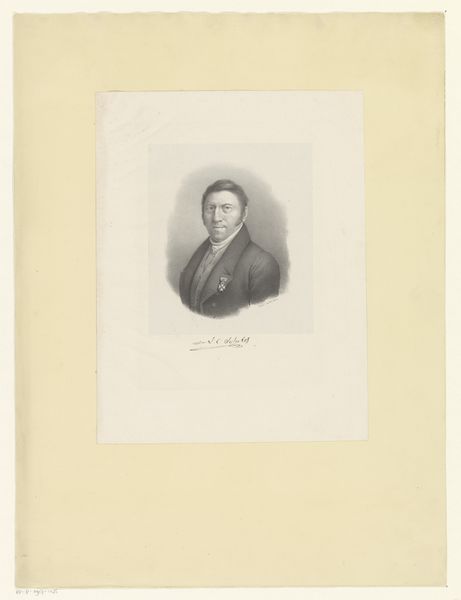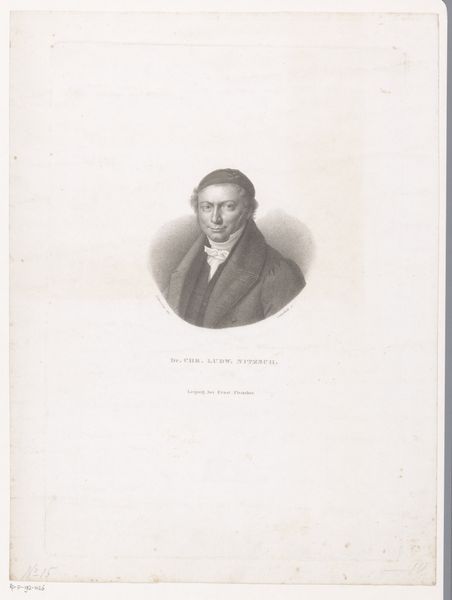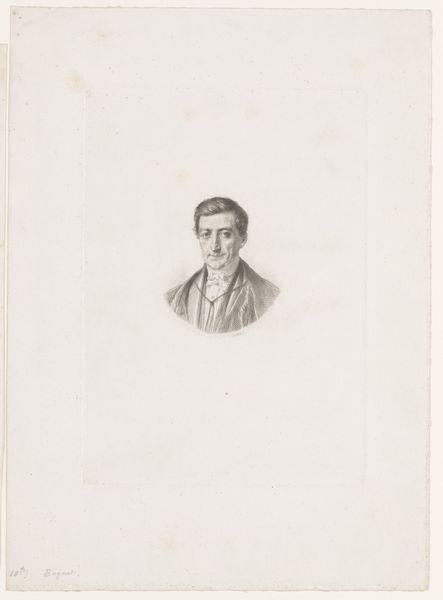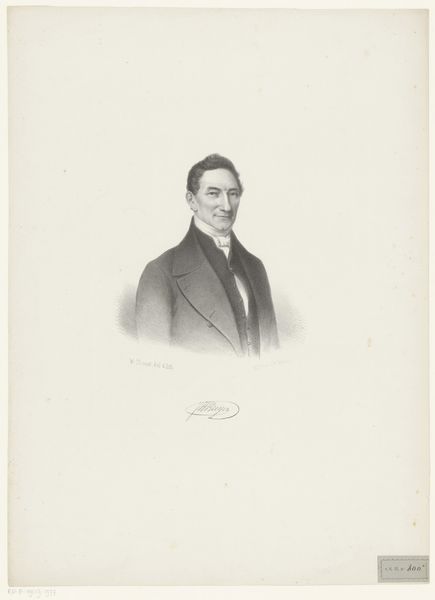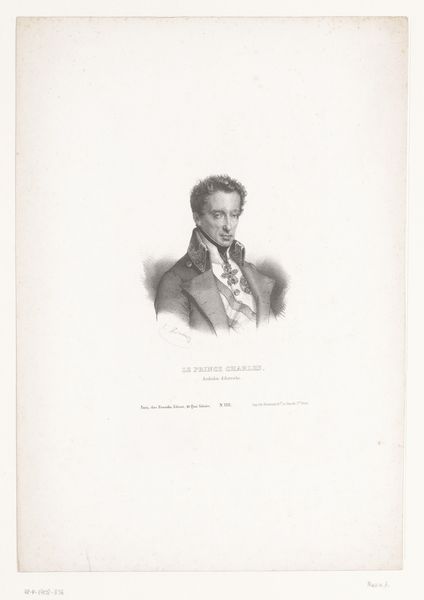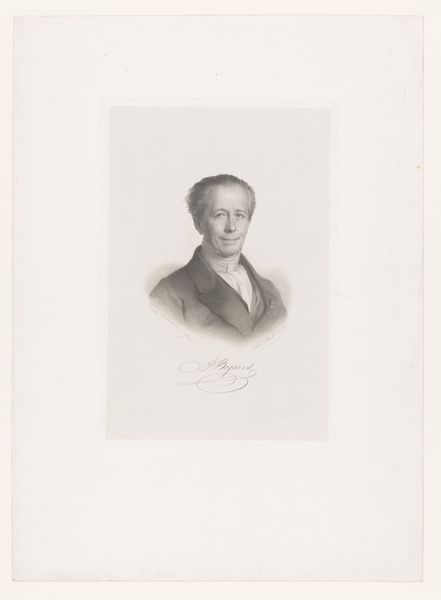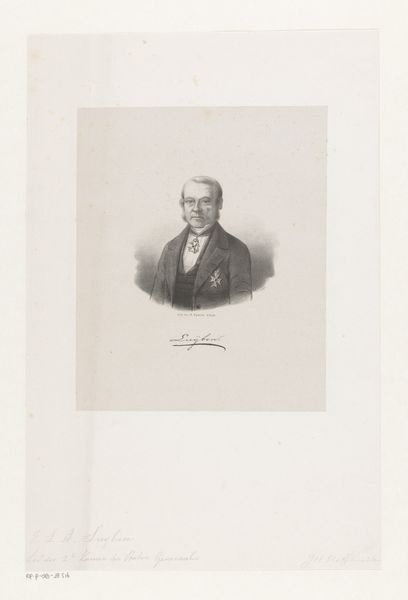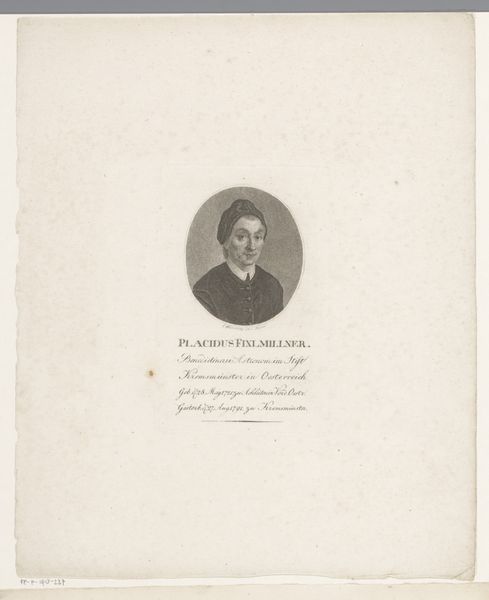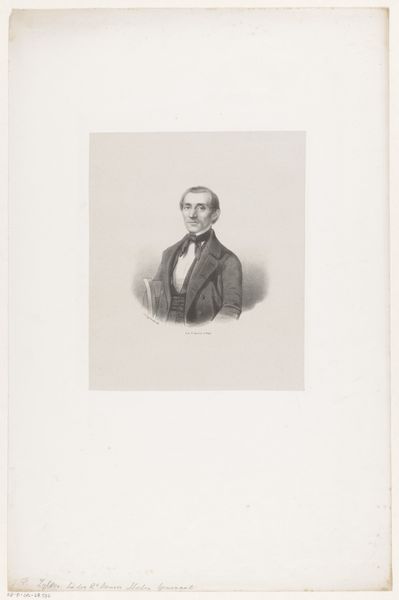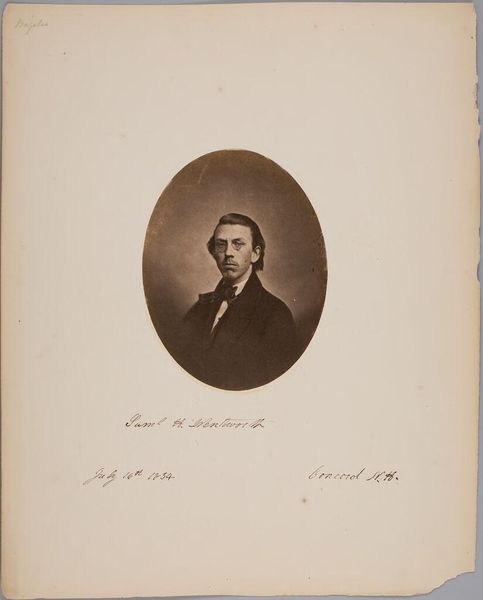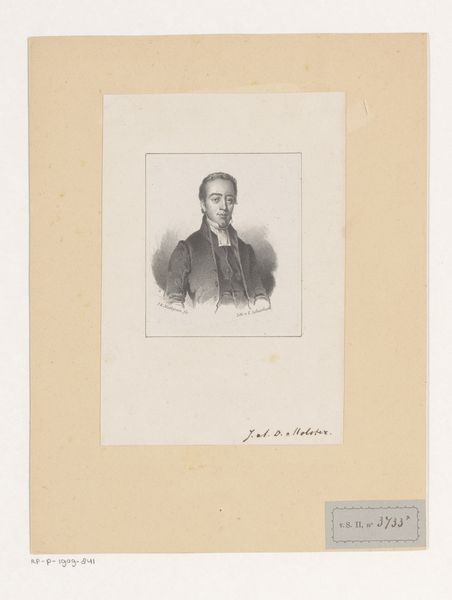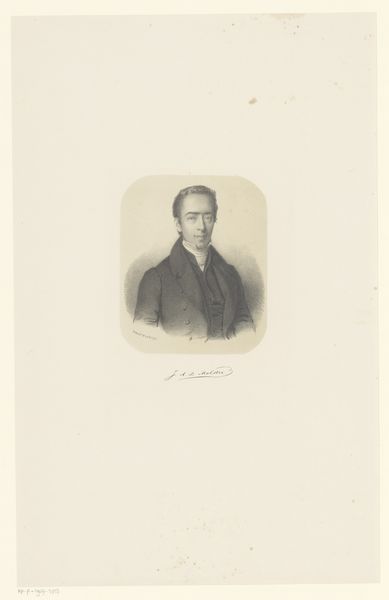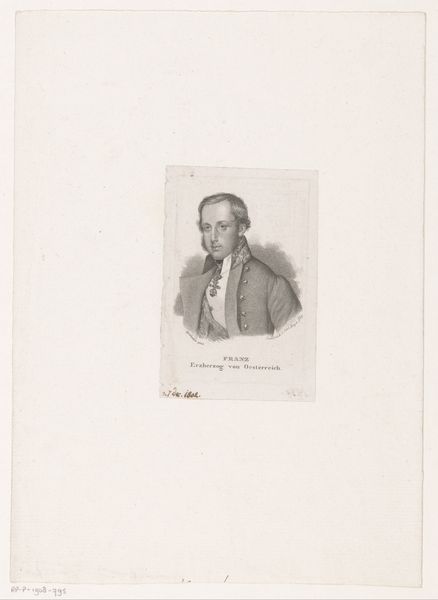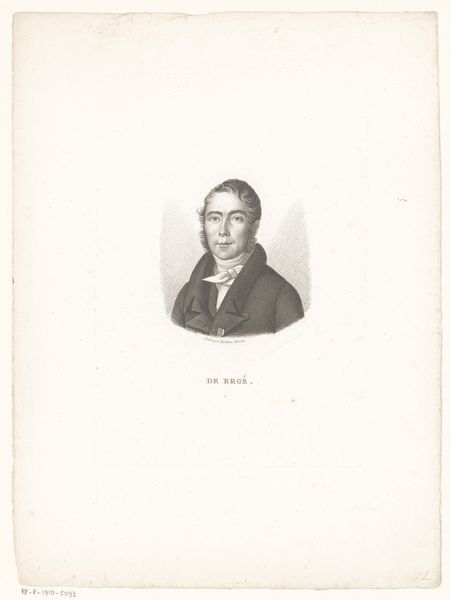
drawing, engraving
#
portrait
#
pencil drawn
#
drawing
#
neoclacissism
#
old engraving style
#
historical photography
#
engraving
Dimensions: height 214 mm, width 125 mm
Copyright: Rijks Museum: Open Domain
Editor: This is Ambroise Tardieu’s "Portret van René-Primevère Lesson," created in 1827. It's an engraving. It’s got this incredible sense of depth for such a stark portrait. What do you see in this piece? Curator: Formally, the artwork demonstrates a delicate balance achieved through contrasting values and carefully modulated lines. Note how the oval format emphasizes the head and shoulders, drawing our attention to the sitter's countenance. The precision of line and the subtle gradations of tone showcase the engraver's mastery of technique. Editor: It's true; there’s so much detail! Did the restrictions of the engraving technique at the time limit artistic choices? Curator: The very act of engraving, a process involving meticulous incision into a metal plate, dictates a linear aesthetic. The density and proximity of these lines create tonal variations, an effect heightened by the textural qualities inherent in the engraving. Notice how the rendering of light and shadow defines the form of Lesson's face and clothing. Are there specific elements in this that you find interesting? Editor: I’m fascinated by the textures of the coat versus his soft face. Curator: Yes, the contrast heightens the subject’s character through visual signifiers and draws your focus. The use of visual rhetoric speaks volumes to his character without stating anything literally. Editor: I hadn't thought about the artistic choice influencing how I perceive him. Curator: Precisely. This piece serves as a reminder that an artwork's formal elements are inextricably linked to its potential for conveying meaning. Editor: Thanks! It is helpful to see the portrait in this more nuanced light.
Comments
No comments
Be the first to comment and join the conversation on the ultimate creative platform.
